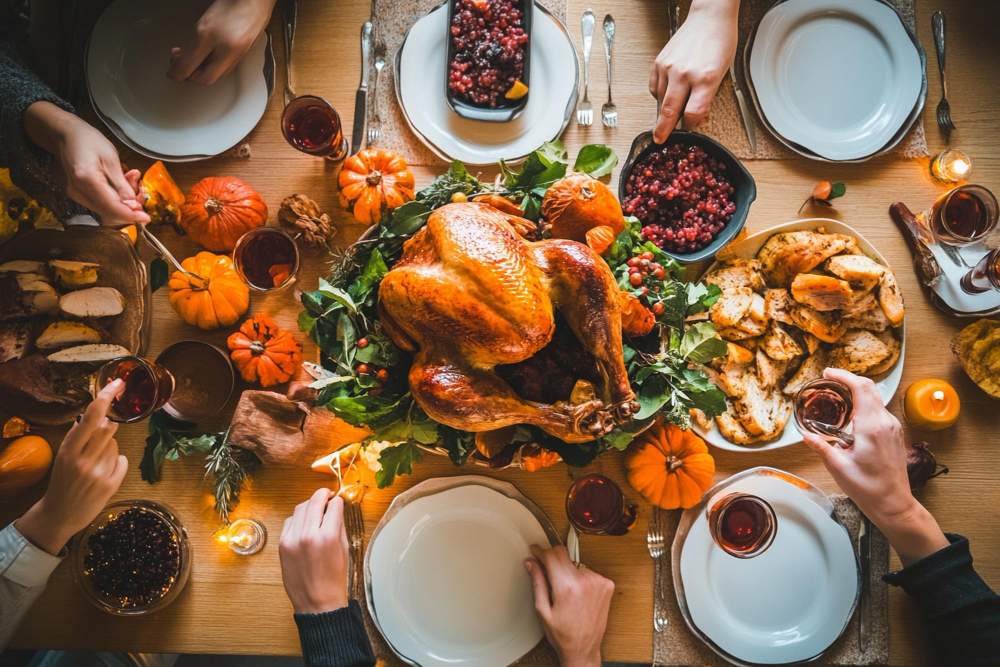Every year, millions of Americans gather to share a meal, watch football, and kick off the holiday season. Thanksgiving is a holiday steeped in tradition, from the turkey on the table to the parade on TV. Have you ever wondered where these customs originate?
The 1621 Feast: Myth vs. Fact
The event most closely associated with the “First Thanksgiving” was a three-day harvest feast in 1621 at the Plymouth Colony. After a brutal first year, the English settlers, often referred to as Pilgrims, had a successful harvest with the help of the Wampanoag people who taught them how to cultivate local crops.
It’s essential to distinguish between myth and historical fact. The attendees were not celebrating a friendly, pre-planned dinner party. The Wampanoag, led by Massasoit, likely arrived after hearing celebratory gunfire and came to investigate, possibly as a diplomatic or defensive measure. The feast that followed was a moment of temporary alliance between two very different cultures. It was not called Thanksgiving by the participants and was not repeated annually.
From Proclamations to a National Holiday
For nearly two centuries after the 1621 feast, “thanksgiving” days were declared sporadically by colonial and later, state, governors. These were typically days of prayer and fasting, often called to celebrate a military victory or a plentiful harvest. George Washington issued the first national Thanksgiving proclamation in 1789, but the holiday did not gain widespread recognition.
The person most responsible for making Thanksgiving a national fixture is Sarah Josepha Hale. A prominent writer and editor, Hale launched a nearly 40-year campaign to establish a fixed, national day of thanks. She believed it would help unify a country increasingly divided over slavery.
Finally, in 1863, in the midst of the Civil War, President Abraham Lincoln issued a proclamation declaring the last Thursday in November as a national day of “Thanksgiving and Praise.” He hoped it would help heal a fractured nation. From that point on, Thanksgiving became an official, annual holiday in the United States.
Crafting the Thanksgiving Menu
What would Thanksgiving be without turkey, stuffing, and pumpkin pie? The menu we consider “traditional” evolved over centuries, blending regional ingredients with Victorian-era nostalgia.
The Rise of the Turkey
While the 1621 attendees ate fowl, it was more likely to have been goose or duck. Turkey became the centerpiece in the 19th century, partly because it was a large bird that could feed a big family. It was also native to North America, giving it an authentically American feel. By the time Lincoln declared the holiday, turkey was already cemented in the popular imagination as the quintessential Thanksgiving dish.
Side Dishes and Desserts
Stuffing, or dressing, has colonial roots as a way to use stale bread and stretch a meal. Cranberry sauce, a sweet and tart relish, came from the abundant native berries in New England. Pumpkin, a New World squash, was initially served in savory preparations. It wasn’t until the 19th century that it was popularized in its sweet, spiced pie form, thanks in part to recipes published in Hale’s magazines.
The advent of industrialization in the late 19th and early 20th centuries made these foods more accessible. Canned goods, such as jellied cranberry sauce and canned pumpkin, enabled families across the country to replicate the New England-style Thanksgiving meal, standardizing the menu.
The Modern Thanksgiving
After World War II, improvements in highways and air travel made it easier for families to gather from afar, cementing the holiday as a time for homecoming. Televised parades and football games brought shared national experiences into living rooms across the country.
Today, traditions continue to evolve. “Friendsgiving” has become a popular way for young adults and those living far from family to celebrate with their chosen community. Many people also embrace the spirit of giving by volunteering at food banks or soup kitchens.
A Holiday for Everyone
Thanksgiving is not a static historical reenactment. It is a living, breathing holiday that each generation reshapes. It is a day to gather, to eat, and to give thanks—a tradition that, in its purest form, connects us to the earliest inhabitants of this land and to each other.
The team at USA Real Estate and Property Management is grateful to have been serving the Prescott area for many years. If you have questions about the Prescott area real estate, please call the USA team at 928-775-0400.

